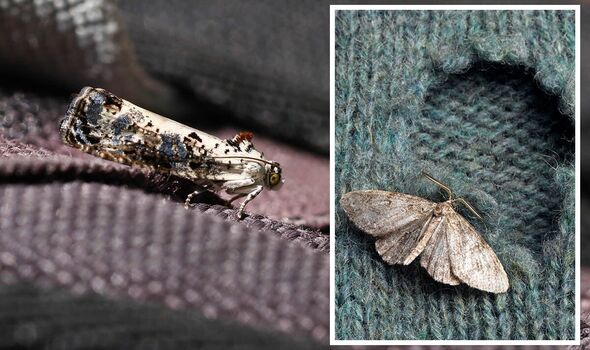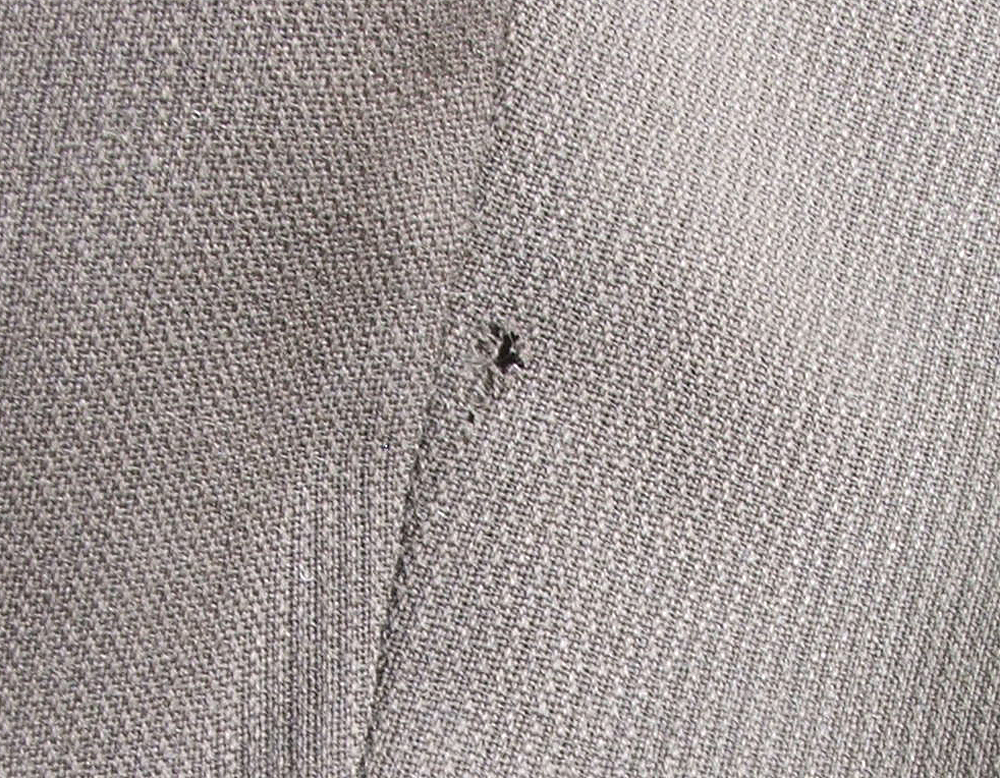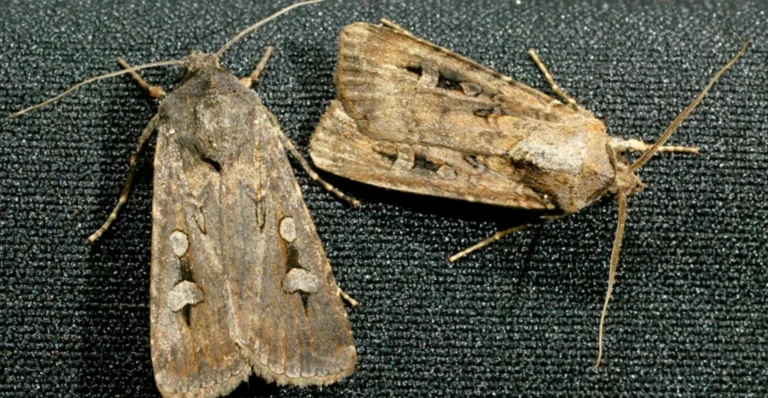Moths do not eat polyester; they are attracted to natural fibers like wool, silk, cotton, and fur because they contain proteins necessary for their sustenance.
Polyester is a synthetic material and lacks these proteins, making it resistant to moth damage. Preventive measures should be taken to protect natural fiber items from moth infestations, even if they are stored near polyester items.
How do moths select their food?
It’s important to note that moths do not eat synthetic materials like polyester, nylon, or acrylic because these materials lack the proteins needed for their sustenance.
Moths’ Attraction to Natural Fibers
Moths are primarily attracted to natural fibers such as wool, silk, cotton, and fur because these materials contain proteins that moths and their larvae can digest.
Furthermore, the proteins found in these natural fibers, like keratin in wool and fur and fibroin in silk, serve as a food source for moth larvae.
Moreover, moths have evolved to seek out these protein-rich materials for their survival and reproduction.
Reasons for Moths’ Preference for Certain Materials

- Nutritional Value: Natural fibers provide moths with the necessary nutrients for their development. These materials contain amino acids and other compounds that support the growth of moth larvae.
- Digestibility: Moths have enzymes that enable them to break down and digest the proteins present in natural fibers, making these materials an ideal food source for their larvae.
- Evolutionary Adaptation: Over millions of years, moths have developed a strong attraction to natural fibers because they offer a reliable and abundant food supply.
Overview of Materials Moths Commonly Target
Moths are known to target a variety of natural materials, including:
- Wool: Wool is a favorite of clothes moths (such as the common clothes moth, Tineola bisselliella) due to its high keratin content.
- Silk: Silk is another attractive material for moths, as it contains fibroin, a protein that moth larvae can consume.
- Cotton: While not as preferred as wool or silk, cotton can also be susceptible to moth damage, especially if it’s soiled with food stains or sweat, which can provide additional nutrients for moth larvae.
- Fur: Fur coats, accessories, and animal hides are appealing to moths due to their keratin-rich composition.
Why don’t moths eat polyester?
Polyester is a synthetic polymer made from petrochemicals through a process called polymerization. It is a versatile and widely used synthetic textile and fabric known for its durability, wrinkle resistance, and ease of care.
Polyester fibers are smooth, strong, and resistant to stretching and shrinking, making them ideal for various applications, including clothing, upholstery, and bedding.
Absence of Proteins in Polyester
One crucial factor that distinguishes polyester from natural fibers is its chemical composition. Polyester is composed of long chains of repeating units, primarily derived from petrochemical sources, and does not contain any proteins.
Proteins are essential for the nutrition and development of moth larvae. They provide the amino acids and nutrients necessary for their growth and survival.
Unlike natural fibers like wool, silk, and cotton, polyester does not have the protein content that moths and their larvae require for sustenance.
Why Moths Do Not Eat Polyester
Moths have evolved to target materials containing proteins because they have specialized enzymes that can break down and digest these proteins. Since polyester lacks these proteins, it is nutritionally unsuitable for moths.
Moths primarily rely on natural fibers, which are rich in keratin (in the case of wool and fur) or fibroin (in the case of silk) to provide the nutrients needed for their development.
The absence of a protein food source in polyester means that moths are not attracted to or interested in consuming this synthetic material.
It’s worth noting that while moths do not eat polyester, they can still pose a threat to nearby natural fiber items if stored together.
Moths can lay eggs near these synthetic materials, and when the larvae hatch, they may eventually move on to attack adjacent natural fiber items, causing damage indirectly.
Therefore, proper storage and preventive measures are essential to protect natural fiber textiles from moth infestations, even in the presence of polyester items.
How to prevent moth damage to fabrics?
Preventive measures are essential to safeguard natural fiber fabrics from moth damage because moths can cause significant harm to clothing, textiles, and other items.
Moth larvae can chew through and feed on natural fibers, leading to unsightly holes and damage to valuable garments and textiles.
Prevention is often more effective and less costly than trying to repair or replace moth-damaged items.
Tips for Safeguarding Natural Fiber Items
- Proper Storage: Store natural fiber clothing and textiles in clean, airtight containers or garment bags to prevent moths from gaining access. Vacuum-sealed bags can be particularly effective.
- Regular Cleaning: Clean garments before storing them, as moths are attracted to sweat, food, and other organic stains on fabric. Dry cleaning or laundering items and ensuring they are completely dry can deter moths.
- Frequent Inspection: Periodically inspect stored items for signs of moth activity, such as small holes or silken threads. Early detection can prevent extensive damage.
- Natural Repellents: Some natural substances like cedarwood, lavender, and rosemary are known to repel moths. Place cedarwood blocks, sachets of dried lavender or herbs, or cedar-lined storage containers near vulnerable items.
- Avoid Overcrowding: Avoid cramming too many items into storage spaces, as moths thrive in dark, undisturbed areas. Adequate air circulation can help deter infestations.
- Regular Rotation: Rotate and wear or use stored items periodically. Moths are less likely to infest frequently disturbed fabrics.
- Sunlight and Fresh Air: Moths dislike direct sunlight and fresh air. On sunny days, consider airing out stored items and exposing them to sunlight for natural pest control.
Using Moth Repellents and Traps

- Mothballs: Mothballs contain chemicals like naphthalene or paradichlorobenzene that release fumes toxic to moths. However, they also have health and environmental concerns and should be used with caution.
- Cedar Blocks and Closets: Cedarwood releases natural oils that repel moths. Place cedar blocks or hang cedar rings in closets and storage areas.
- Lavender Sachets: Lavender is a natural moth repellent. Place sachets filled with dried lavender flowers in drawers and storage containers.
- Sticky Traps: Sticky moth traps can help capture adult moths. These traps use pheromones to attract male moths, preventing them from mating with females.
- Ultrasonic Repellent Devices: Some electronic devices emit ultrasonic sound waves that claim to deter moths. Their effectiveness is debated, and results may vary.
- Professional Pest Control: In severe infestations, consider consulting a pest control professional who can provide tailored solutions and treatments.
FAQ’s
Do moths eat cotton or polyester?
Moths primarily target natural fibers like cotton and avoid eating polyester.
Do moths eat synthetic clothing?
No, moths do not eat synthetic clothing; they prefer natural fibers.
Does polyester attract insects?
Polyester itself does not attract insects because it does not contain the proteins insects seek as a food source.
What material do moths hate?
Moths dislike materials like cedarwood and lavender, which act as natural repellents, discouraging their presence.
Is cotton moth-proof?
Cotton is not moth-proof; moths can damage cotton if it’s soiled or contains organic stains that provide nutrients for moth larvae. Proper storage and preventive measures are necessary.
Final Words
In conclusion, understanding moths’ feeding preferences and the reasons behind their attraction to natural fibers is crucial for protecting valuable textiles and clothing items. Moths are drawn to materials rich in proteins, such as wool and silk, which serve as a vital food source for their larvae.
However, synthetic materials like polyester, which lack these proteins, are immune to moth damage. To safeguard natural fiber items from moth infestations, implementing preventive measures like proper storage, regular cleaning, and the use of natural repellents is essential.
Additionally, the use of moth repellents and traps can further deter these pests from causing harm. By following these guidelines, individuals can maintain the integrity and longevity of their fabrics while minimizing the risk of moth-related damage.

